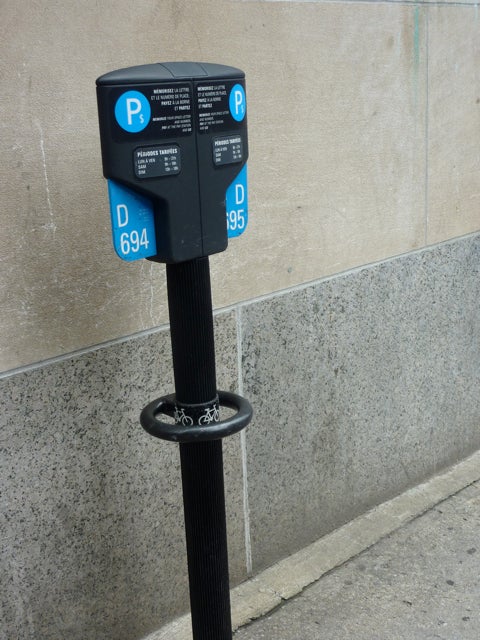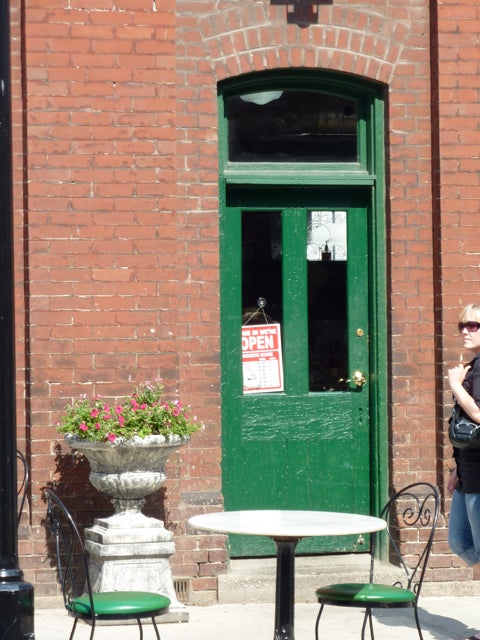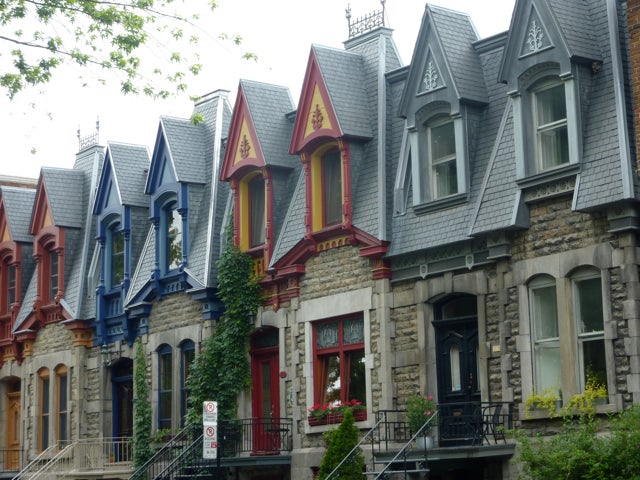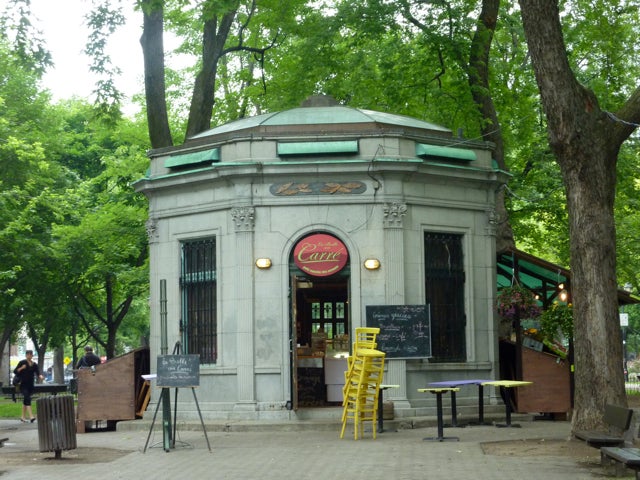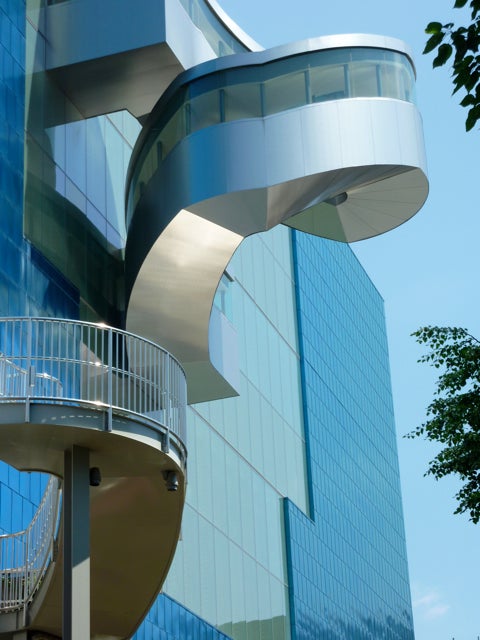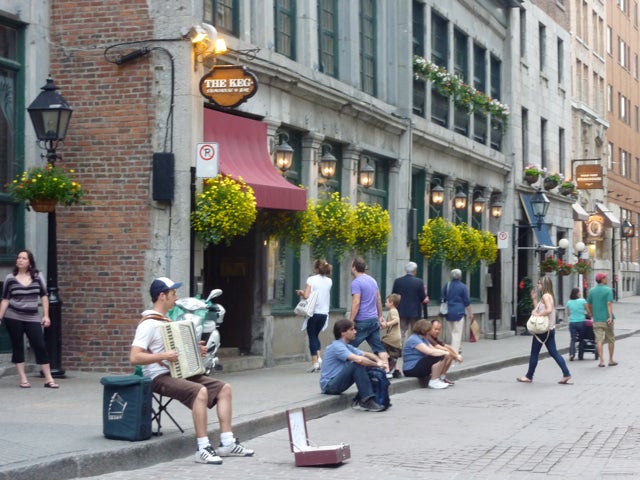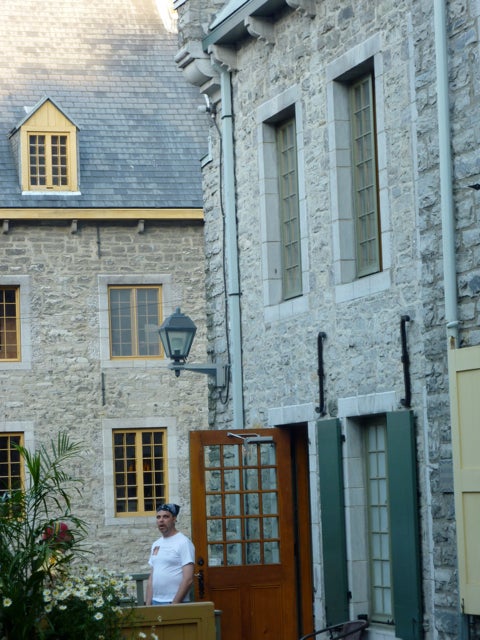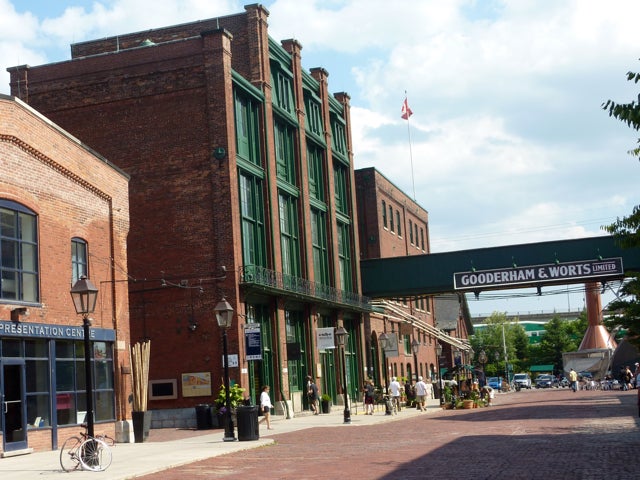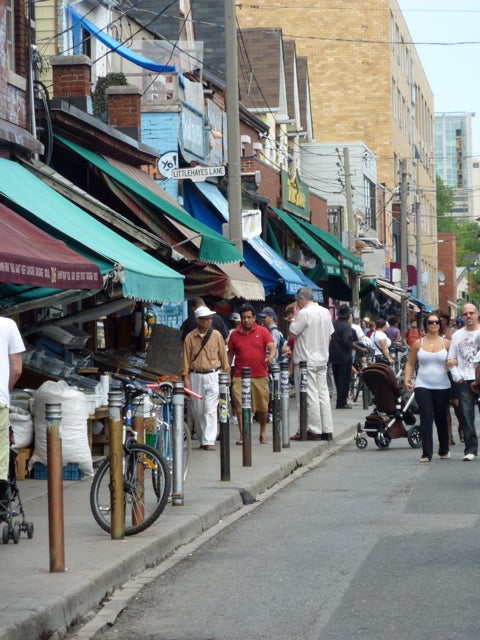Built environment lessons from three northern neighbors
Two trips within one month recently brought me back to eastern Canada for the first time in 15 or so years. And while Quebec City, Montreal, and Toronto are each very individual, they share traits. Montreal and Quebec City treat French as the primary language; Montreal and Toronto are big cities; all three have great preservation districts.
Each is uniquely Canadian. And, each offer lessons for Philadelphia:
• Les bicyclettes rule. The amount of bike riders in Montreal is immediately noticeable and quite stunning. I haven’t seen anything like it in any other North American city (unless you count Manhattan’s workforce of bike messengers and, more recently, pedicabs). Bike lanes, bike meters (!), and bike share stations are everywhere. The city’s BIXI share system has, in fact, recently been adapted by five cities, including London.
• Small squares matter. In Montreal, the unveiling of a yearlong, $10 million re-do of centrally-located Dorchester Square merited a full page article in the Gazette. Paid for jointly by the city and the province of Quebec, the project included new granite walkways, plantings, lighting, and benches. Although we’ve done similar things in town —think, Franklin Square — it’s been awhile. Let’s get back to paying attention to our public spaces. We can start small: Louis Kahn Park, anyone?
• Give architecture its due. The Canadian Center for Architecture in Montreal is situated in an elegant contemporary structure that incorporates an old mansion and rests in a lovely garden. A museum, research center, theater, and bookstore make this — as its name suggests — a major facility devoted to the study of the field. Our AIA center on Arch Street is a good start, but Philadelphia deserves better.
• Industrial eyesores can be beautiful. I was a little leery when someone encouraged me to check out Quebec City’s Image Mill. But this imaginative sound and light show projected onto a 2,000-foot long, 98-foot high concrete silo that’s been standing in the middle of the harbor since 1913 is kind of amazing. The horizontal nature of the structure makes it perfect to showcase the area’s manufacturing heritage — the film transforms the building into crumbling bridges and rumbling trains, for instance — but what really matters is the ingenuous use of what had long been a blemish on the face of this beautiful city.
• Forts are an asset. In Quebec City, I spent an entire morning at La Citadelle, a working military base constructed in 1820 that offers stunning fortifications, great artifacts and exhibits, and even guards in red tunics with black beaver-skin hats. There were lines of people waiting to get in. In Philadelphia, I once made a pilgrimage to Ft. Mifflin with a friend and wondered why no one else was around, or why no one else I know had ever visited it. Philadelphia’s built environment is filled with such great architectural and historic sites — I’m thinking also of all of those wonderful houses in Fairmount Park. For the most part, though, they remain unattainable and off our radar screens.
• Green roofs are mandated. In a first for a North American city, this year Toronto passed an ordinance requiring all new construction with floorspace of more than 2,000 square meters (about 21,000 square feet) to devote a percentage of roofspace to vegetation. While developers may balk, the benefits in reducing heat islands, reducing energy costs, and managing stormwater runoff are obvious. Plus, the city looks great from on high.
• More condos mean more people. I don’t know what they’re putting in the Canadian water, but Toronto is experiencing a massive condo boom. Much of it is financed by hotel developments — more than a half-dozen are coming on line in the next two years, and they all include condo components. All told, though, there are some 50 condo projects in the greater downtown (a radius of about two miles) and with no mortgage crisis to speak of the city (and pre-sell levels of up to 80% required) builders are having no problem moving units.
• Adaptive reuse can work on a large scale. Even though it’s been going strong for a few years now, I had never heard of Toronto’s Distillery District. Built from the skeleton of a defunct Victorian-age whiskey distillery, this 14-acre village is entered through the complex’s original gates and features brick streets below, catwalks overhead, and dozens of restaurants, galleries, theaters, and boutiques which have set up shop in original factory buildings. It’s the largest and best-preserved collection of industrial architecture from this era, and while it is a dreaded “entertainment distriict,” it never seems forced or too pretty. All I could think of was, “Navy Yard, Navy Yard.”
• Pedestrians matter. This year, Toronto instituted so-called “scramble corners.” Although they’ve been around since the 1940s and have fallen in an out of favor over the years, they make perfect sense to me, a non-car-owner. Meant to facilitate foot traffic by stopping cars in all four directions, these intersections allow pedestrians to cross anyway they want, including diagonally. Toronto’s version doesn’t make for as masterful a ballet as the calm madness that ensues at Tokyo’s Shibuya Crossing — where six intersections converge — but I’ll remember them fondly the next time a driver honks at me as I’m trying to maneuver past his vehicle on Walnut Street.
• Never give up. For years, nay decades, Toronto has battled with its token hideous expressway, an elevated hulk called The Gardiner. All of the mega-bucks answers — tear it down, bury it, High Line-ize it —have been considered. The latest idea seems like a go, and it’s a relative cheapy. This design calls for using the expressway as a ready-made canopy for events and celebrations, with plantings that echo the city’s pre-fill shoreline while they boast green bonafides. It’s obviously a different situation than the one that I-95 presents to Philadelphia at Penn’s Landing, but in looking to adapt what’s already there, it offers inspiration.
Contact JoAnn Greco at www.joanngreco.com
Check out her new online magazine, TheCityTraveler at www.thecitytraveler.com
Previous postcards: Kansas City, Paris, Detroit Part 1, Austin, China, San Francisco, Germany, Pittsburgh, New Orleans,New York City, Boston, San Antonio, Minneapolis, Detroit Part 2, Templehof, Chicago, Italy, St. Louis, Atlanta, Houston.
WHYY is your source for fact-based, in-depth journalism and information. As a nonprofit organization, we rely on financial support from readers like you. Please give today.




